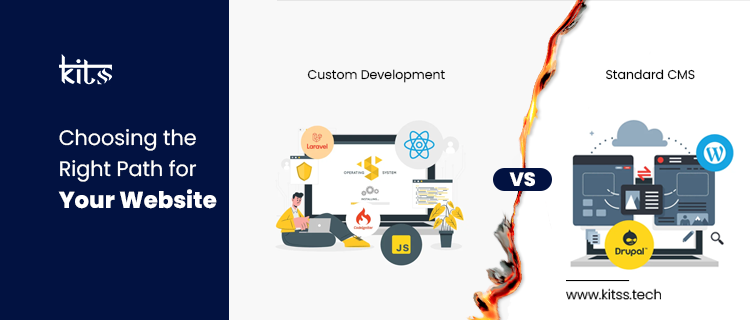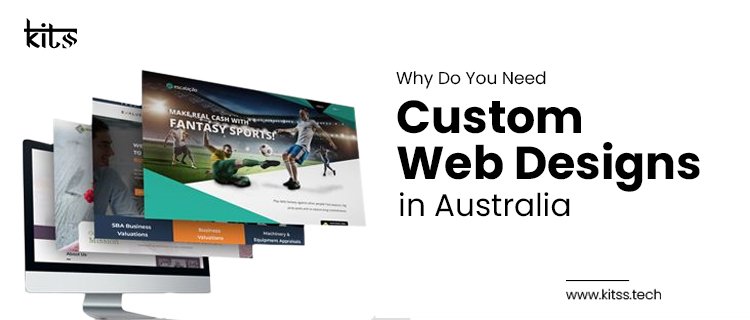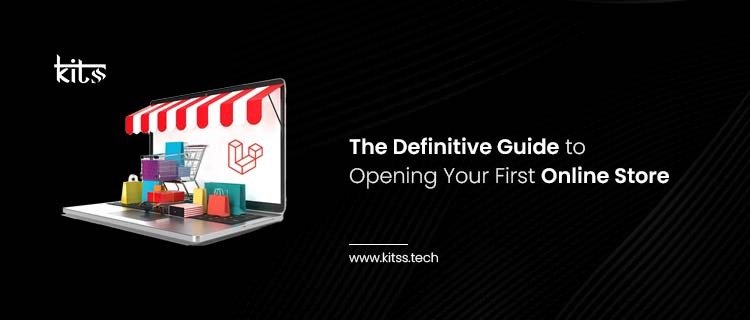Choosing the Right Path for Your Website: Custom Development vs. Standard CMS
Hey! So, you’re trying to figure out if you should build a custom website or use a standard Content Management System (CMS) for your business, right? It’s a bit like deciding whether to have a suit custom-made or buying one straight off the shelf. Each option has its benefits—it really boils down to what your business specifically needs, how much you’re willing to spend, and how soon you need your website up and running. This blog is here to walk you through both paths, helping you pick the one that will not only put your business on the map but also help you make more money.

Understanding Custom Website Development
Choosing custom development is like making your website from scratch. You get to build everything exactly how you want it, with unique features tailored just for your business. It’s great because you can make your site fit your brand and scale it as your business grows.
Advantages of a Custom Website
The best part about going custom? You control everything—the look, the feel, and how it works. Your site will be one of a kind, offering a unique experience that can set your business apart from others.
The Flexibility of Custom Solutions
Custom development isn’t just about how things look; it lets you add special features that solve particular problems for your business. Whether that’s custom shopping carts, specific user paths, or intricate data handling, you can do things your way, something you can’t always do with a standard CMS.

Long-term Scalability
A custom site can grow with your business. You can add or change parts as needed without the limits you might find with ready-made CMS templates. It’s built to change as your needs do.
Enhanced Security
With a custom website, you get security that’s designed just for you, protecting your business data and your customers’ information better than many off-the-shelf options might.

Optimized Performance
Custom sites are often faster and more efficient because they don’t have unnecessary code or features you don’t need.
SCALABILITY
Total SEO Control
You can tweak every part of a custom site to perform better in search results, from how the site is built to the smallest details like meta tags.
Integration Capabilities
A custom site can connect seamlessly with your other business systems—like your CRM, accounting software, or inventory system—making everything work together smoothly.
Higher Initial Cost
Sure, custom development costs more at the start. You’re paying for a site that’s tailored to fit your needs from the ground up.

Longer Development Time
Building from scratch takes time. If you need a website fast, a custom project might not be the way to go since it needs careful planning and testing.
Requires Technical Expertise
Running a custom website can require some tech skills, or at least a team to help you manage things, which is something to think about, especially if you’re a smaller business.
Choosing Between Custom Development and CMS
Here’s the deal: the choice between a custom website and using a CMS depends on what your business needs, how much you can spend, and if you want something truly unique. A CMS might be good enough for simpler needs, but if you’re after something more tailored, custom is the way to go.

Checklist to Help Decide Between Custom Website and Standard CMS
- Budget Constraints: Are you okay with spending more upfront for a custom site, or do you need to keep costs down with a CMS?
- Unique Branding Needs: Do you need a design that screams “you,” or will a standard template do the job?
- Functionality Requirements: Need any special features that a CMS can’t offer? Or will the usual plugins and extensions cover what you need?
- Time to Market: Can you wait for a custom build, or do you need something up ASAP?
- Scalability: Expecting your business to grow a lot? A custom site can adapt better than a CMS.
- Technical Expertise: Got the tech skills or a team to manage a custom site, or would you prefer something simpler?
- Security Concerns: Need top-notch security? Custom might be better. But if standard security works, a CMS could be enough.
- SEO and Performance Optimization: Want to control every aspect of SEO and performance, or is what’s offered by CMS platforms enough?
- Integration Needs: Got complex system integration needs? A custom site could handle them better.
- Long-term Maintenance: Ready to invest in ongoing maintenance for a custom site, or looking for something with less hassle?
Conclusion
If you’re leaning towards a custom website and want someone who can nail it, consider a specialist like Kabir IT Services. Whether you go custom or choose a standard CMS, the right choice depends on what you want for your business. Either way, picking the right partner is key to making sure your site not only looks great but works flawlessly. So, what do you think? Ready to make a decision, or still got questions? Let’s chat and figure out the best path for your online presence!





















